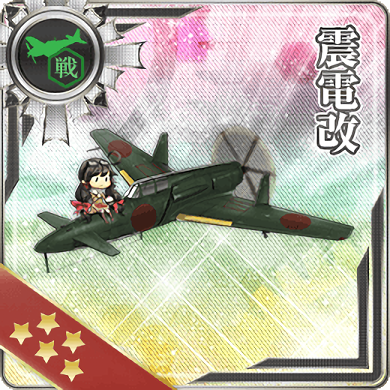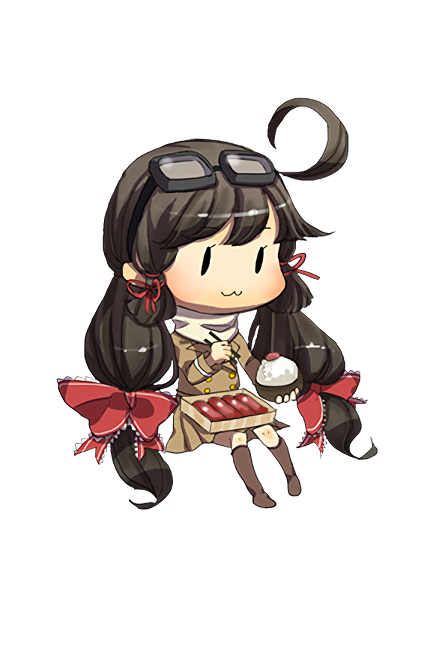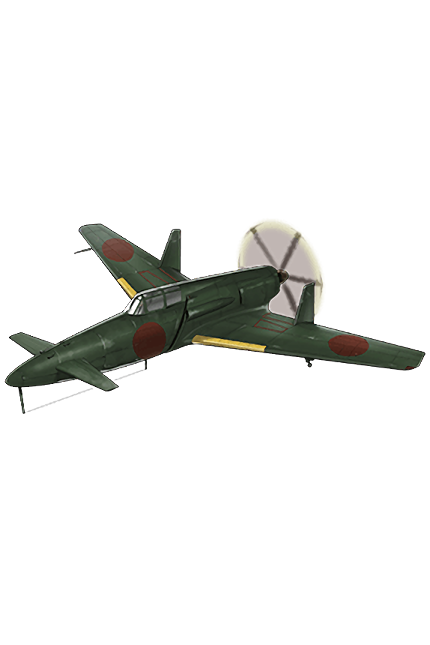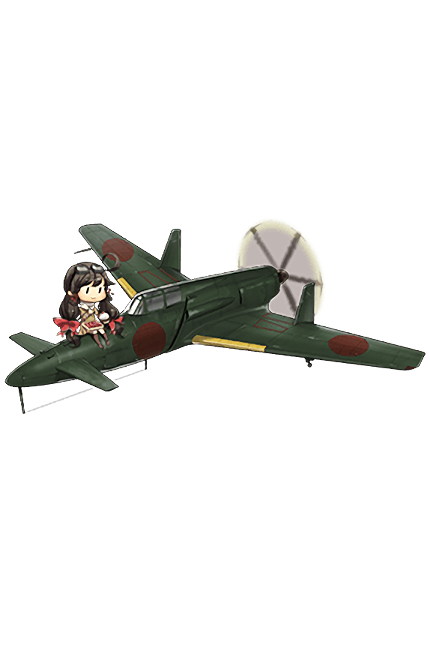- Welcome to the Kancolle Wiki!
- If you have any questions regarding site content, account registration, etc., please visit the KanColle Wiki Discord
Shinden Kai
[Edit]
Magnificent Lightning Kai
No.56 震電改
| |
| Refittable Ship Types | |
| Coastal Defense Ship | Destroyer |
| Light Cruiser | Torpedo Cruiser |
| Heavy Cruiser | Training Cruiser |
| Aviation Cruiser | Fast Battleship |
| Battleship | Aviation Battleship |
| Light Carrier | Standard Aircraft Carrier |
| Armored Carrier | Seaplane Tender |
| Submarine | Aircraft Carrying Submarine |
| Submarine Tender | Fleet Oiler |
| Repair Ship | Amphibious Assault Ship |
| LBAS Plane | |
Introduction
九州飛行機&海軍航空技術廠が生み出した、先進的なエンテ型の試作戦闘機「震電」。
推進プロペラを後方に配置し、重火力を機体前部に集中させた後進翼の機体は、まさに未来と希望を感じさせるもの。
現実世界では、海上に飛び立つことのなかった機体ですが、「艦これ」では着艦フックと尾翼等を補強して登場です!
The creation of Kyushu Aircraft & Yokosuka Naval Air Arsenal, the advanced canard-style prototype fighter, "Shinden".
The propeller is placed in the rear, while heavy firepower is focused on the fore of the reverse-winged fuselage, exactly what you need for the future.
In the real world, this aircraft was never taken to sea, but in Kancolle it has a hook and reinforced tail for its introduction!'
Notes
Unbuildable. Not to be confused with Shiden Kai 2 (Violet Lightning). Spring 2013 Event E-4 reward.
Historical Information
Masayoshi Tsuruno, a lieutenant commander of the Imperial Japanese Navy techincal staff, proposed a canard-based design in 1943. Masayoshi also believed the design could be easily retrofitted with a turbojet when the technology became readily available. His ideas were developed by the First Naval Air Technical Arsenal into three canard-based gliders designated the Yokosuka MXY6. A 22hp Semi 11 engine was fitted to one of these gliders. All proved the feasibility of Masayoshi's proposal.
Impressed by the testing of the MXY6 units, the Navy ordered Kyushu Aircraft Company (formerly Watanabe Tekkoujo) to design an interceptor around Masayoshi's canard concept. Kyushu was relatively free to work on the idea unlike other manufacturers while Masayoshi was selected to lead a team from the First Naval Air Technical Arsenal to assist Kyushu's engineering team. The construction of two prototypes started in 1944 while stress calculations were complete in January 1945, producing a working prototype in April 1945.
The J7W1 prototype was by a 2,130hp supercharged rear-mounted Mitsubishi MK9D (of similar lineage to what would be installed in the Reppuu) driving a six-bladed propeller via an extension shaft. The engine was cooled via long, narrow obliquely mounted intakes on each side of the fuselage, but this design caused problems when the engine was running on the ground. Unavailability of other components also postponed the flight of the J7W1. The prototype was flown successfully by Masayoshi in August 1945 but showed problems, such as vibration in the drive shaft.
A canard based design means that a small wing or foreplane is placed ahead of the main wing of the aircraft, while the pusher configuration - a propeller located behind the engine - has unique advantages, such as not obstructing the placement of guns. Modern examples of canard aircraft include the successful Rafale and Typhoon multirole fighters.
Even before it had flown, the Navy ordered the J7W1 into production and it was to carry very heavy firepower of four 30mm cannons.. Regardless only the two prototypes were completed, with one scrapped while the other was claimed by the US Navy Technical Air Intelligence Unit. Subsequently it was reassembled in the United States, before being transferred to the Smithsonian Institution and is now in storage at the National Air and Space Museum.
As a land-based interceptor that was never successfully produced, the Shinden Kai (in this case meaning "Modified" rather than "Improved") in Kancolle is a theoretical variant with modifications to operate in a carrier-based environment.
In its model designation, J was for land-based fighters of the IJN, while W referred to Watanabe, the company that became Kyushu Aircraft Company.
Trivia
- Historically, "Shinden Kai" actually refers to the J7W2, which was a proposed jet powered variant of the Shinden that was never built even at the prototype level.
- Both the J7W1 Shinden prototypes and the planned J7W2 Shinden Kai were land-based aircraft. Kancolle's version - the "Shinden Kai", "Kai" in this case meaning "modified" - is a theoretical variant with an arresting hook and reinforced airframe to facilitate carrier-based operations.



